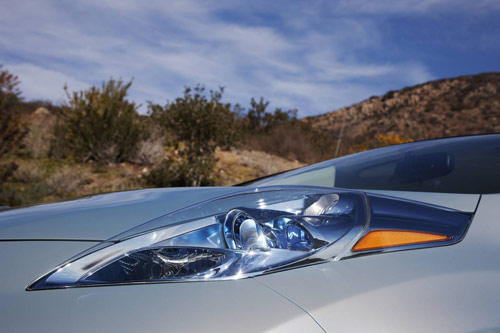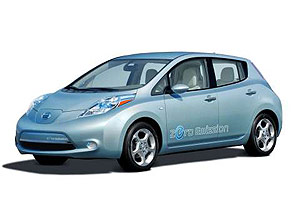 Nissan is beginning to gear up for the release of what it describes as “the first competitively-priced, mass-produced electric vehicle from a mainstream manufacturer”. And just in case you may be wondering … or perhaps as a call to rally Nissan’s own … the latest press release goes on to describe the Nissan Leaf as a “serious car, a real car, and the right car for the times”.
Nissan is beginning to gear up for the release of what it describes as “the first competitively-priced, mass-produced electric vehicle from a mainstream manufacturer”. And just in case you may be wondering … or perhaps as a call to rally Nissan’s own … the latest press release goes on to describe the Nissan Leaf as a “serious car, a real car, and the right car for the times”.
Well they’ve certainly got that one right … it is an electric car for these times but is it the first mainstream mass-produced electric car to hit the market … Mitsubishi might just dispute that one.
And even though the Nissan Leaf is going to hit the market it won’t be launched everywhere at the same time and it won’t quite hit the market here in Australia for some time after the initial release … like at least 18 months after the release of the Nissan Leaf into other markets. But did anyone seriously think that the Nissan Leaf wasn’t a real car?
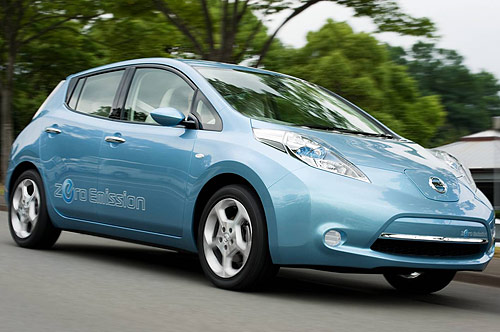
Sales of the Nissan Leaf will begin in the United States, Japan and selected European markets later this year and we won’t see it till some time in 2012. I’m sure that Nissan could produce at least a few of their electric cars for the Australian market before then but the infrastructure that an electric vehicle needs is missing right now in Australia.
So we’ll have to sit back and watch the Nissan Leaf from afar. In the United States there has been a major push to develop a demand for the vehicle and it appears that the Leaf will go on sale to the general public.
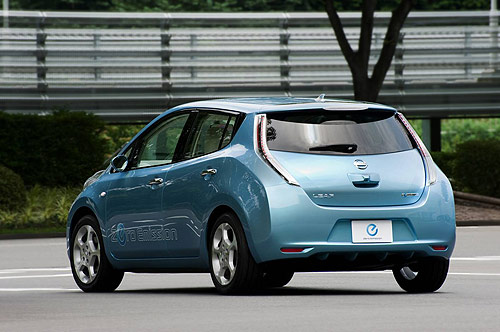
In Europe the Nissan Leaf will go on sale to stakeholders, fleet operators and private customers. The stakeholders that Nissan specifically mentions in its latest press release are two major rental companies … Europcar and Hertz … both of which have signed Memorandums of Understanding with Nissan.
Nissan has also signed Memorandums of Understanding with the New South Wales and Victorian governments but that doesn’t mean the vehicle will get here any quicker. I guess Nissan realizes that neither State government are capable of getting the infrastructure that the Leaf needs in place any quicker than 2012.
A different way of buying the car?
Nissan are still considering just how they will actually sell the car. They know that the battery is the biggest single point of failure … and also the most expensive. So if they sell the car … in the same way that conventional cars are sold … as a complete unit some consumer resistance may develop when owners have to replace the battery.
Sticker shock will have nothing on the shock that some Leaf owners will feel when they see the price of a replacement battery. So Nissan is still looking at the possibility of selling the car but not the battery … instead they would lease the battery to the car buyer and perhaps regularly replace it as the battery approaches its use-by date.
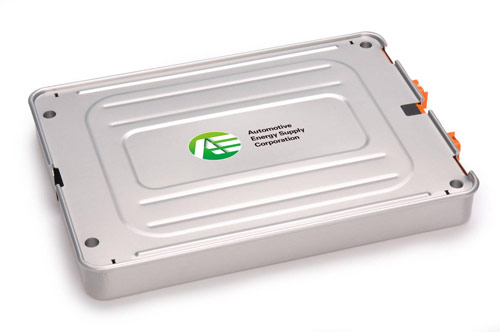
Powering the Nissan Leaf
At the heart of the Nissan Leaf is that very expensive battery … actually its 48 batteries split into two groups that reside under the seats and floor of the Nissan Leaf. That’s a great spot to put them … just so long as the car doesn’t end up in any deep water … because it leaves the boot space free for more luggage.
Those 48 lithium-ion batteries … or modules as Nissan likes to call them … have been specially developed by Nissan and they have twice the energy capacity of normal batteries, they’re thinner and lighter, they hold their charge longer and they’re easier to recycle. All good points for a car that wants to wear the mantle of being exceedingly green.
Tests Nissan has conducted on their lithium-ion batteries have shown that these batteries will still hold 70 to 80 percent of their charge when they’re ten years old.
So the battery is very green and has a long life but what can it do to keep the car moving? Well for a start it’s got a range of 160km and it has a power output of 90kW so it’s not going to be a shrinking violet when it comes to acceleration.
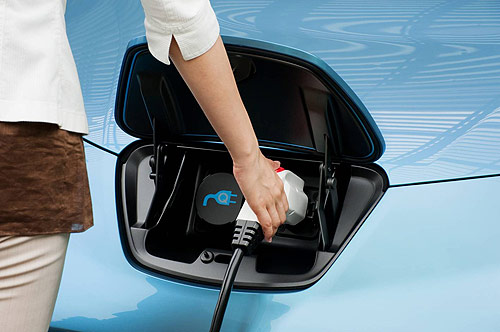
Charging the battery
While the car is in motion the battery will be receiving some level of charging for Nissan have not wasted any opportunity to extend the range of the vehicle. When the driver has his foot on the brake or the vehicle is coasting some charge will be being fed back into the battery.
Of course that’s not going to keep the battery charged forever and Nissan have given Leaf owners two options to fully charge the battery. As everyone would expect the main way to charge the Nissan Leaf is by plugging it into the power grid when you get home or get to the office and a full charge using this system will take around eight hours.
If your battery is running a bit low and you don’t have eight hours to wait for a full charge you can find what Nissan calls “a quick charging post” and plug your vehicle in. In under 30 minutes your Nissan Leaf will be charged up to 80 percent of the capacity of the battery. Of course when the Nissan Leaf is first released quick charging posts are going to be fairly scarce but Nissan expects more to appear around towns and cities as the Leaf becomes popular.
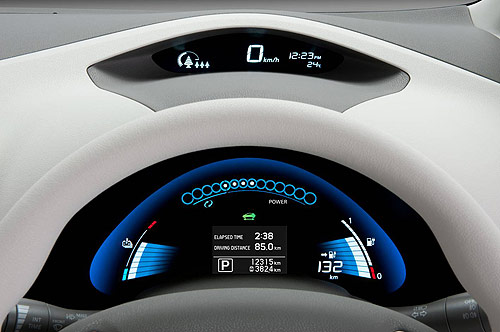
The electric motor
While the battery may be at the heart of the Nissan Leaf it still needs a motor to turn that electrical energy into propulsion and so the Leaf is fitted with an 80kW electric motor that will propel the car up to a maximum speed of 140km/h. Nissan describes the performance of the Leaf as “startling” and that’s what you should expect from an electric vehicle.
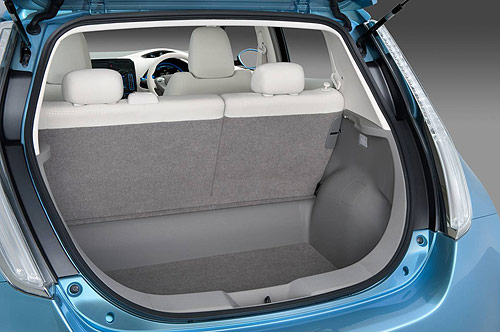
The Nissan Leaf mechanicals
While Nissan is right into economies of scale and building a variety of vehicles on just one platform they haven’t tried to do that with the Nissan Leaf. Instead they’ve developed an entirely new platform for the Leaf that’s 4445mm long, 1770mm wide and has a wheelbase of 2700mm.
Nissan says that the Leaf will seat five people in comfort although we’re not told whether those five are all adults or an unspecified combination of adults and kids. However tall those adults and kids might be, there’s still some room for luggage in the boot and while it’s not a huge boot it does look as though it will at least hold the weekly grocery shopping.
Talking to the Nissan Leaf
Nissan are certainly not letting any modern technology go to waste with the Nissan Leaf and if the owner has a mobile phone they they’ll be able to communicate with the car even though they may not be all that close to it.
Nissan says that owners will be able to use their mobile phones to check on the battery level, preset the interior temperature or even get notification once the vehicle has been charged.
And how much will it cost?
Well Nissan isn’t talking in dollar terms just yet although they do say that it will be “competitively-priced”. However, that’s a relative term and the price when the Nissan Leaf arrives in Australia may not be as “competitive” as you might hope.
While much has been said about the Nissan Leaf being built in America that’s not going to be the case for the first two years. Nissan will start building the Leaf at its plant in Oppama Japan and then bring a Leaf production line on-stream at its US plant in 2012.
The Nissan Leaf is a stylish looking vehicle and it’s certainly going to be worth waiting for but for those of us who live well outside the city limits a vehicle with a range of just 160km certainly won’t be game-changing.
